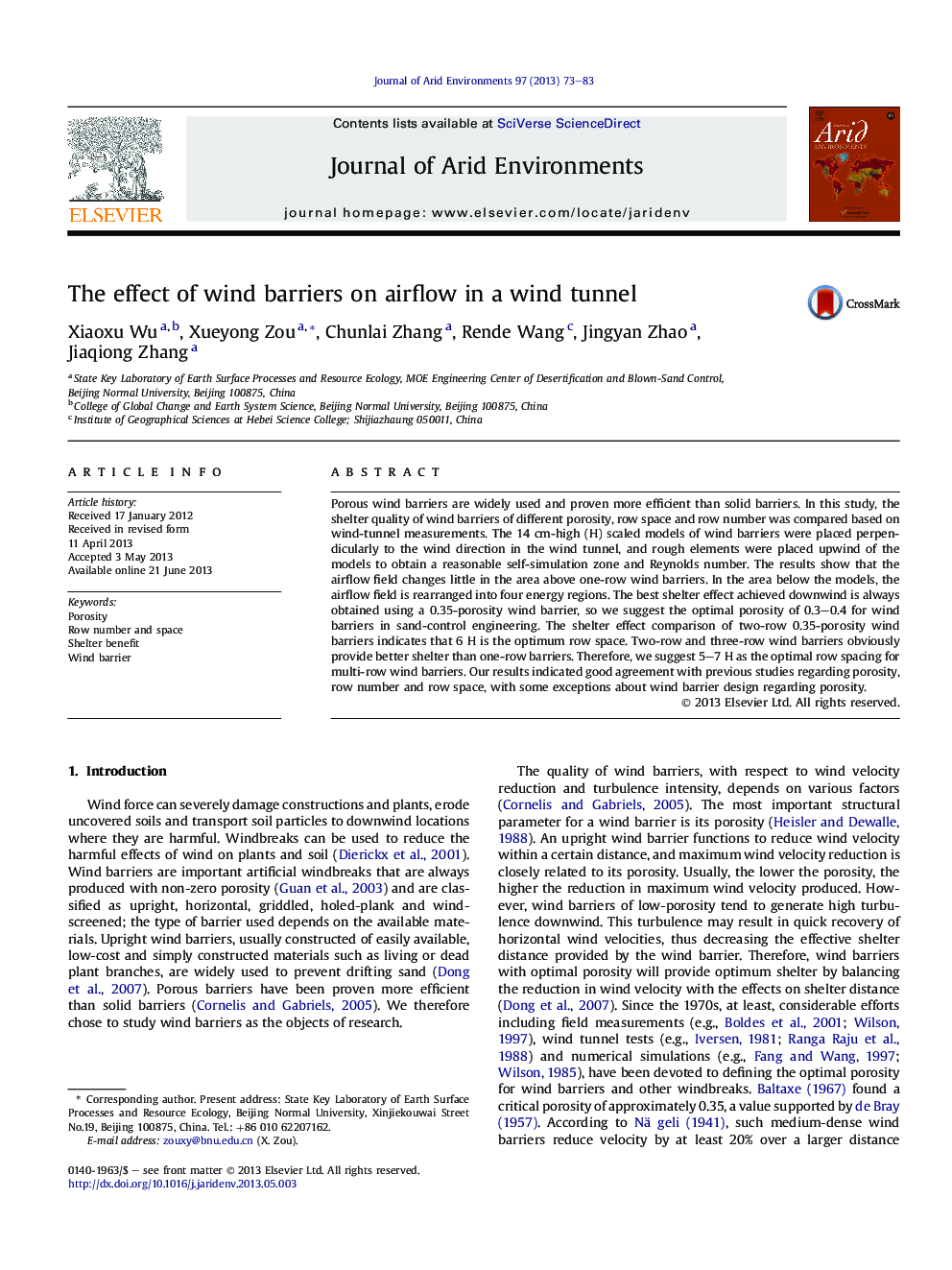| Article ID | Journal | Published Year | Pages | File Type |
|---|---|---|---|---|
| 6303532 | Journal of Arid Environments | 2013 | 11 Pages |
Abstract
Porous wind barriers are widely used and proven more efficient than solid barriers. In this study, the shelter quality of wind barriers of different porosity, row space and row number was compared based on wind-tunnel measurements. The 14Â cm-high (H) scaled models of wind barriers were placed perpendicularly to the wind direction in the wind tunnel, and rough elements were placed upwind of the models to obtain a reasonable self-simulation zone and Reynolds number. The results show that the airflow field changes little in the area above one-row wind barriers. In the area below the models, the airflow field is rearranged into four energy regions. The best shelter effect achieved downwind is always obtained using a 0.35-porosity wind barrier, so we suggest the optimal porosity of 0.3-0.4 for wind barriers in sand-control engineering. The shelter effect comparison of two-row 0.35-porosity wind barriers indicates that 6Â H is the optimum row space. Two-row and three-row wind barriers obviously provide better shelter than one-row barriers. Therefore, we suggest 5-7Â H as the optimal row spacing for multi-row wind barriers. Our results indicated good agreement with previous studies regarding porosity, row number and row space, with some exceptions about wind barrier design regarding porosity.
Keywords
Related Topics
Physical Sciences and Engineering
Earth and Planetary Sciences
Earth-Surface Processes
Authors
Xiaoxu Wu, Xueyong Zou, Chunlai Zhang, Rende Wang, Jingyan Zhao, Jiaqiong Zhang,
